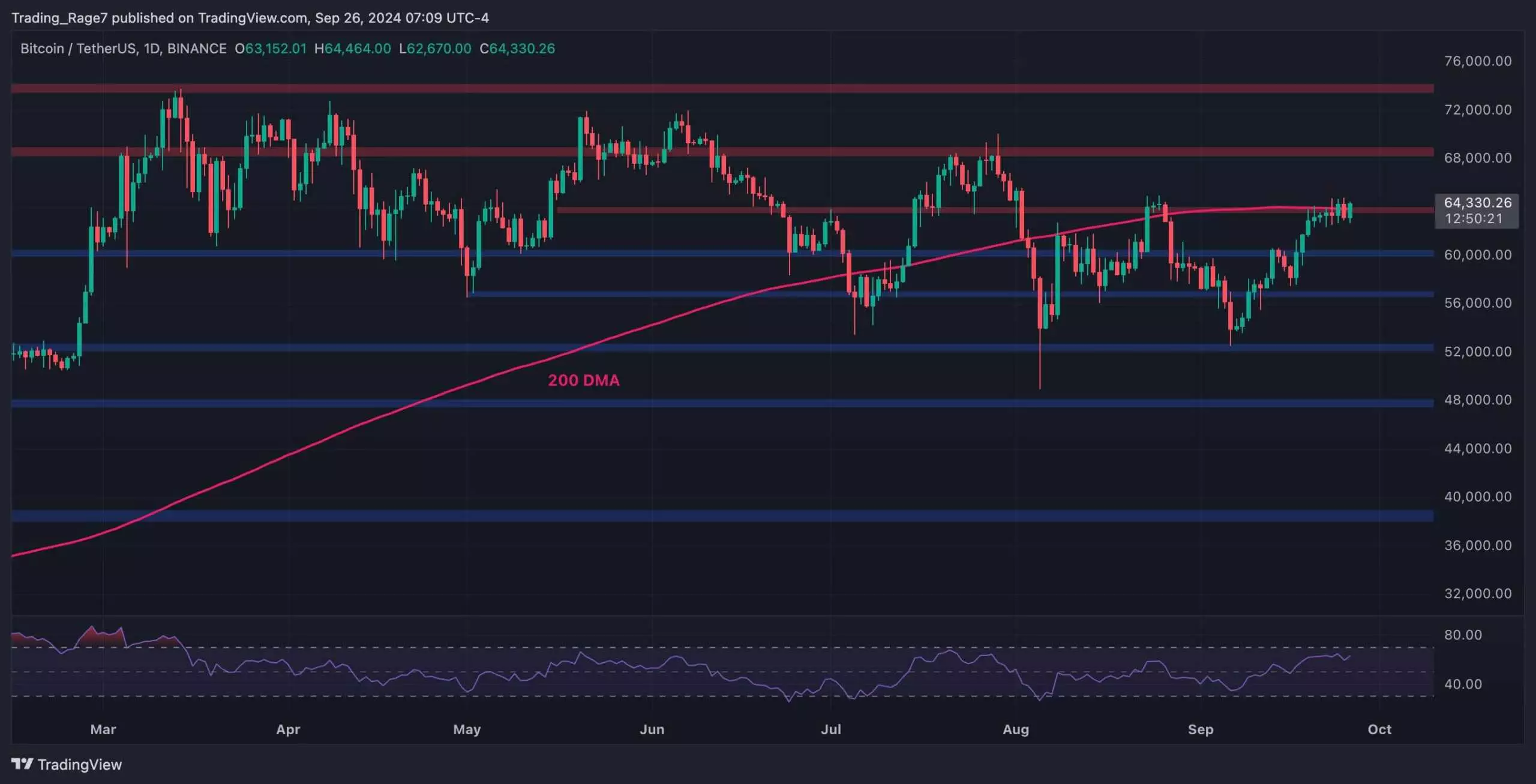Bitcoin, the flagship cryptocurrency, is at a pivotal juncture, with its price movements likely to influence the broader cryptocurrency landscape. Presently, Bitcoin is trading around the critical $64,000 mark, a significant resistance level that it has reached after demonstrating remarkable resilience. Following a substantial rebound from the support threshold of $52,000, the cryptocurrency experienced upward momentum, surpassing key benchmarks at both $56,000 and $60,000. This rally has attracted the attention of traders and investors alike, igniting discussions about the future trajectory of Bitcoin and the overall market.
As it stands, the important 200-day moving average has emerged as a formidable barrier. A successful breakout could pave the way for a renewed bullish momentum, potentially sending prices soaring towards the next significant target of $70,000. However, the flipside presents a more concerning scenario; a rejection from this critical resistance level could trigger a decline that might see Bitcoin test the $60,000 support again. This dichotomy in potential price action underscores the delicate balance of forces currently at play within the market.
Technical Indicators and Market Patterns
The technical indicators provide a deeper insight into Bitcoin’s current positioning. The 4-hour chart reveals that Bitcoin is currently in a state of consolidation, forming a tight descending channel at $64,000. This pattern is suggestive of a classical bearish reversal should it break downward. Conversely, should Bitcoin manage to overcome this resistance, we may witness an aggressive rally towards higher price points. Additionally, with the Relative Strength Index (RSI) lingering above the 50% threshold, the prevailing momentum appears to favor a bullish continuation, at least in the short term.
This technical outlook stands in stark contrast to the recent behavior exhibited by short-term holders within the market. Many of these investors, driven by emotional reactions to market fluctuations, have capitulated during this consolidation period. The Short-Term Holder Spent Output Profit Ratio (STH SOPR) serves as a quantifiable measure of this trend, revealing that short-term holders are realizing losses—a significant shift given the previous record highs observed around the $70,000 mark.
Investor Psychology and Market Implications
The psychology of short-term investors plays a pivotal role in market dynamics, particularly in a bullish phase. The recent rally has seen some profit-taking among these investors, leading to an influx of selling pressure. While realizing gains in a rising market is a common strategy, an imbalance between selling volume and market demand can result in a downturn. If the demand fails to match the selling pressure induced by profit realization, Bitcoin’s price could face downward momentum once more.
The market’s reaction to these developments will be instrumental in shaping not only Bitcoin’s immediate future but also the overall sentiment within the cryptocurrency ecosystem. Investors, both traditional and new, should remain vigilant and discerning, as the upcoming days are likely to test the resilience of this market and its participants.
Bitcoin’s current price movements and the psychological factors influencing investor behavior will be crucial in determining whether it can break through its resistance levels or succumb to potential bearish trends. This critical moment in Bitcoin’s journey serves as a reminder of the volatility and unpredictability inherent in the cryptocurrency market.
















Leave a Reply